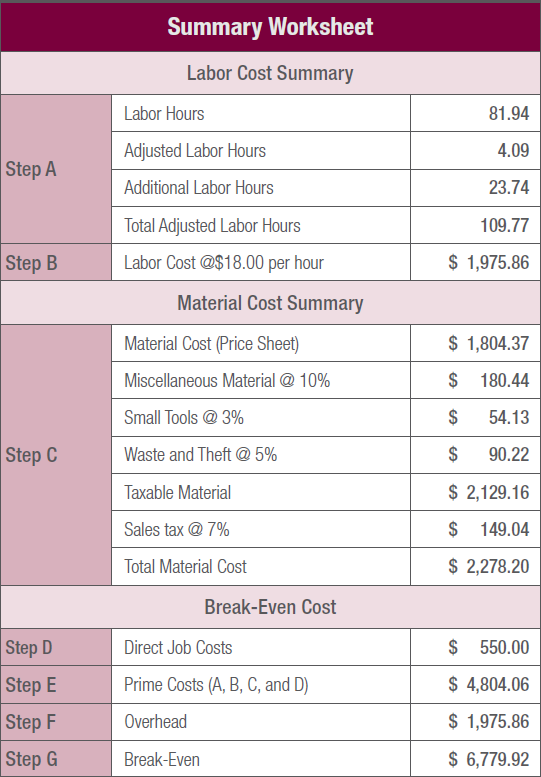|
Estimating is a skill that can make or break a career or
company. Understanding the estimating and bidding
processes is essential for your business to remain
profitable.

This is newsletter #33 in the series. If you have
missed prior newsletters, and are enjoying the series,
we encourage you to purchase the complete Electrical Estimating Program.
Click on the coupon at the bottom of this page.
|
Break-Even - Organizing Your Costs |
Summarizing an estimate to determine your break-even cost can be overwhelming. One mistake at this point can be costly in terms of losing a job or worse yet, securing a job at a loss! This is the part of the estimating process that requires you to make the judgment calls on job conditions, labor productivity, miscellaneous material requirements, waste, theft, small tools, direct job expenses, and overhead.
The first step in this process requires you to transfer the totals for labor hours and material costs to a summary worksheet. This document will help you organize the different costs so there is less likelihood of a mistake. The summary worksheet has seven major sections, and they include:
- Step A”Labor Hours
- Step B”Labor Cost
- Step C”Material Cost
- Step D”Direct Cost
- Step E”Prime Cost
- Step F”Overhead
- Step G”Break-Even Cost

|
|
| We'd love to hear from you about this series,
and the ways you're using it. Send us your comments and feedback by clicking on
Post a Comment below. Look out for the next part
in this series a month from now, and please share
with your colleagues. |
The above content is extracted from Mike Holt's Electrical Estimating Program.
|
|
|
|

